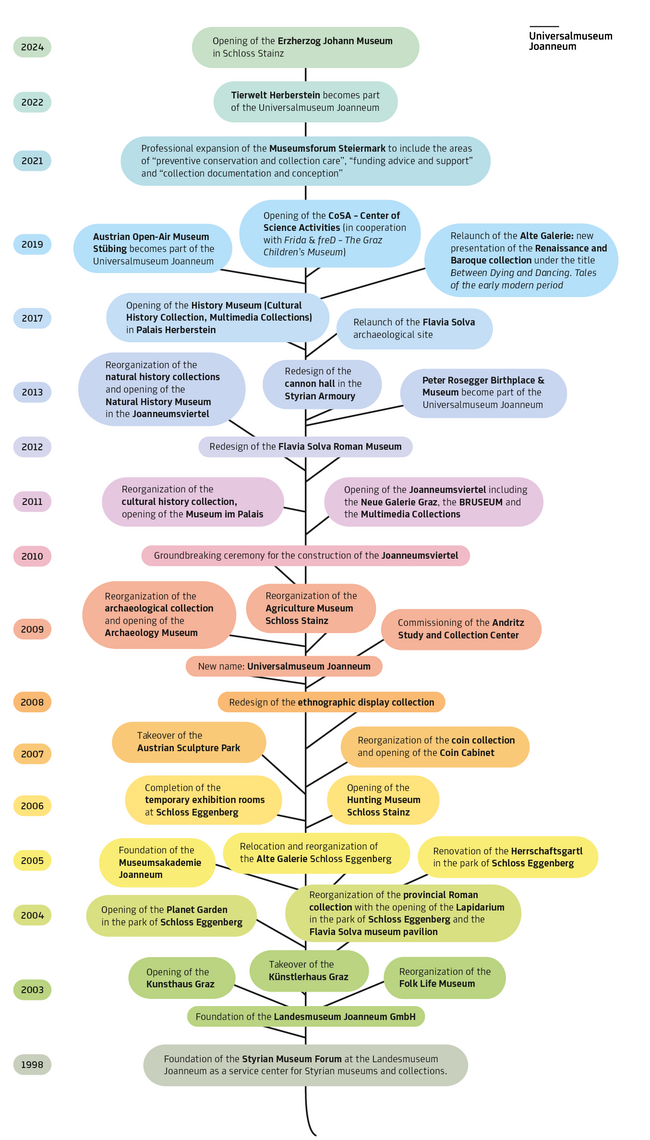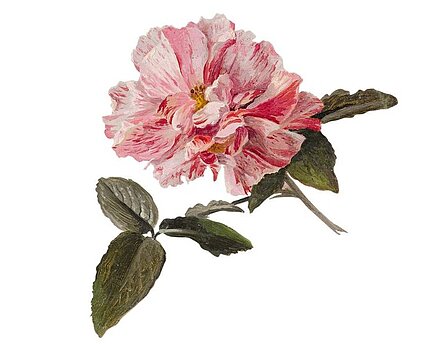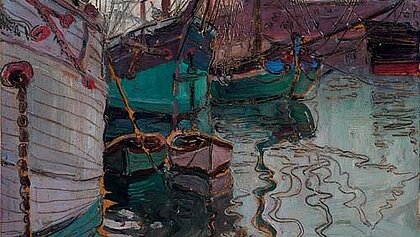In 1811, Archduke Johann of Austria (1782-1859) and the estates of Styria jointly set up the Joanneum as an ‘inner Austrian national museum’. Archduke Johann, brother of the Austrian emperor Franz I, was a wholehearted supporter of the educational ideals of the Enlightenment, and expected this first public museum of Austria to be set up as a comprehensive collection of the things that ‘nature, the changing times, human industry and perseverance have created that teachers of the various public institutions instil into the enquiring minds of their pupils. It must bring these things to life and thereby make learning easier [and] stimulate a thirst for knowledge.’
Nature – alongside technology, history and folk life – was a great passion of the Habsburg archduke, who was extremely popular in Styria because of his extensive efforts to promote the common good. Thus, in accordance with his principal interests, the Joanneum was, initially, first and foremost an educational institution oriented towards natural history and technology.
Leading natural philosophers of the 19th century such as Friedrich Mohs (who developed the Mohs scale of mineral hardness in Graz) and Franz Xaver Unger (one of the pioneers of palaeobotany) taught at the Joanneum, which in 1864 gained the status of Imperial (k.k.) Technical College.
Reorganized in 1975 as the Archduke Johann University of Technology in Graz with five faculties, the educational side was thereafter separated both geographically and organizationally from the museum collections, which had been combined in a unified Styrian Museum back in 1887.
Universalmuseum Joanneum
History
19th century
Nature – alongside technology, history and folk life – was a great passion of the Habsburg archduke, who was extremely popular in Styria because of his extensive efforts to promote the common good. Thus, in accordance with his principal interests, the Joanneum was, initially, first and foremost an educational institution oriented towards natural history and technology.
Leading natural philosophers of the 19th century such as Friedrich Mohs (who developed the Mohs scale of mineral hardness in Graz) and Franz Xaver Unger (one of the pioneers of palaeobotany) taught at the Joanneum, which in 1864 gained the status of Imperial (k.k.) Technical College.
Reorganized in 1975 as the Archduke Johann University of Technology in Graz with five faculties, the educational side was thereafter separated both geographically and organizationally from the museum collections, which had been combined in a unified Styrian Museum back in 1887.
In the following years, the collections were moved to the Lesliehof, a former aristocratic palazzo at no. 10 Raubergasse. Also part of the reorganized museum was the Styrian Estates’ Drawing Academy – originally set up by engraver Johann Veit Kauperz (1741-1815) – and its collection of art. It was – like the Joanneum’s collections – originally an ancillary collection used for teaching purposes. This ‘Styrian Picture Gallery’ was greatly expanded in the 19th century after a great number of high-quality works of art were given by generous patrons.
Despite the first 19th-century reorganization, more space was needed soon after, and between 1890 and 1895 a new museum building designed by August Gunolt in a Viennese Baroque Revival style was constructed in Neutorgasse, in the immediate vicinity of the Lesliehof. This imposing building was home to the Museum of Cultural History, Arts and Crafts, which included items relating to mediaeval art. The Styrian Picture Gallery also moved to this new address.
20th century
In 1941, the Gallery was subdivided, with separate departments for art up to about 1800 (Alte Galerie) and more modern art (Neue Galerie).
Over the 20th century, further collections were added to the Joanneum, so that now the Joanneum Universal Museum has nine buildings of historic interest available for its collections, plus buildings of high-quality contemporary architecture.

20 museums and 1 zoo
Graz was the European Capital of Culture in 2003 and the Kunsthaus Graz was opened as part of the Joanneum in this context. The Folk Life Museum was reorganized in 2003 and the Künstlerhaus Graz was taken over.
2004 saw the reorganization of the provincial Roman collection with the opening of the Lapidarium in the park of Schloss Eggenberg and the Flavia Solva museum pavilion. The Planetary Garden in the park of Schloss Eggenberg was also opened in 2004.
In 2005, the Alte Galerie moved to Schloss Eggenberg and was reinstalled there, and the Herrschaftsgartl in the park was renovated. Museumsakademie Joanneum was also founded in the same year.
In 2006, the Hunting Museum Schloss Stainz was opened and the temporary exhibition rooms in Schloss Eggenberg were completed.
In 2007, the operation of the Austrian Sculpture Park was taken over. The Coin Cabinet was opened in Schloss Eggenberg with a new display of the coin collection.
The display collection in the Folk Life Museum was redesigned in 2008.
In 2009, the Joanneum was given a new corporate design. In order to anchor the diversity of the collections in the name, the name of the former department of the Styrian Provincial Administration was also renewed: the Landesmuseum thus became the Universalmuseum Joanneum.
In 2009, the archaeological collections were reorganized with the opening of the new Archaeology Museum in the park of Schloss Eggenberg, as was the Agriculture Museum at Schloss Stainz. The Study and Collection Center (SSZ) in Graz-Andritz was opened in 2009.
The ground-breaking ceremony for the Joanneumsviertel took place in 2010.
In 2011, the Joanneumsviertel with the Neue Galerie Graz, the BRUSEUM and the Multimedia Collections was opened to mark the 200th anniversary of the Joanneum. In Palais Herberstein, the former location of the Neue Galerie, the cultural history collection was reinstalled in the "Museum im Palais".
In 2012, the Flavia Solva Roman Museum underwent a relaunch.
In 2013, the new presentation of the natural history collections in the Natural History Museum in the Joanneumsviertel was unveiled. The cannon hall in the Styrian Armoury was also given a new look. The Rosegger Museum Krieglach and the Rosegger Birthplace Alpl became part of the Universalmuseum Joanneum in 2013.
In 2017, the History Museum in Palais Herberstein was opened as a joint home for the Cultural History Collection and the Multimedia Collections. The Flavia Solva archaeological site was also relaunched.
In 2019, the Austrian Open-Air Museum Stübing became part of the Universalmuseum Joanneum, the CoSA - Center of Science Activities was opened in the Joanneumsviertel in cooperation with Frida & freD – The Graz Children's Museum and the Renaissance and Baroque collection in the Alte Galerie was repositioned under the title Between Dying and Dancing. Tales of the early modern period
In 2022, Tierwelt Herberstein was incorporated into Universalmuseum Joanneum GmbH as the 14th location.
2024 Opening Erzherzog Johann Museum in Schloss Stainz
Restitution
Find out more about the history of restitution at the Universalmuseum Joanneum.






















